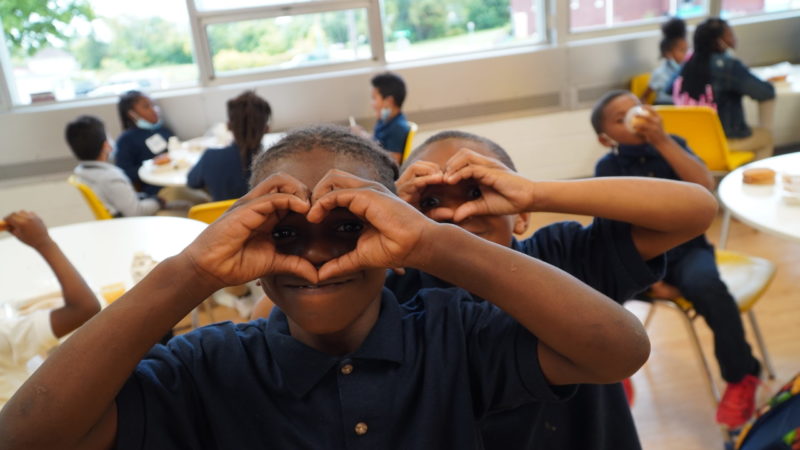Apply now to join our next cohort of Community Science Fellows and Community Leads!

Photo courtesy of Kevin Mays, Sylvester Broome Empowerment Village
This project builds on a previous Thriving Earth Exchange project with the Sylvester Broome Empowerment Village.
Once a hub for automobile manufacturing, Flint, Michigan has faced several environmental and economic hardships since the 1960s. Situated 65 miles northwest of Detroit, the city is the fourth largest in the state of Michigan. After General Motors downsized its workforce in the 1960s, the city lost half its population and sank into a deep economic depression. Crime rates sky-rocketed and job opportunities diminished. Most recently the city has battled a public health crisis involving drinking water contaminated by lead. Despite its recent history, many initiatives are underway to revitalize Flints’ communities: socially, environmentally and economically. The Sylvester Broome Empowerment Village (SBEV) aims to do just this. The organization’s vision is to transform Flint into a just and equitable city by investing in youth. Located in the former Dewey school building in Northern Flint, SBEV provides a 62,000 square foot space for the young people of Flint to “learn, earn, develop, lead, and invest in their individual development, as well as the development of their communities.”
Nearing 100 years old, the existing SBEV building is currently being renovated to increase the sustainability and energy efficiency of operations – and to better accommodate educational, training and job placement services for Flint’s youth. Part of this upgrade includes a new sports facility, which has a windowless wall that faces an empty lot and a public park. With the installation of a unique green wall here, SBEV sees an opportunity to create an efficient, participatory, and educational green space to reflect and embody their commitment to youth education, empowerment and sustainability. They wish to create a vertical garden that local Flint residents can take pride in and consider a local asset, and that will inspire similar projects in the community.
This project has been conceived and designed in partnership with community leaders at SBEV.
SBEV envisions to involve the local young community in the nurturing and maintenance of the green wall. The community leaders would also like to engage both residents and SBEV’s youth in the design, planting, and potential harvesting of the vertical garden. Thus, in another phase of this project (which could be before, after, or concurrent depending on the scientific partner’s alignment), SBEV hopes to work with an education/outreach expert to develop an education/outreach plan and prepare the community leaders to successfully implement that plan once the wall is complete. Local residents have helped develop the adjacent park, and have expressed interest in adding educational and participatory elements.

Work will begin as soon as possible, with an expected duration of six to eight months.
The input and recommendations of a scientist will result in a plan for a green wall that matches and embodies the SBEV vision and mission. The outputs of the project will include:
The design plan will allow the community leaders to take the next step in applying for grants or support to fund the installation of the green wall at SBEV.
Maryum Rasool – Executive Director of the Sylvester Broome Empowerment Village (SBEV)
Benjamin Pauli – Assistant Professor of Social Science at Kettering University
The community leaders commit to engaging with the scientific partner on this project and providing strategic direction to ensure that the green wall construction, planting, and education plan is well integrated with SBEV’s programs and priorities. In consultation with the scientific partner, the community leads will develop language and apply for funding opportunities to make the green wall a reality.
Ishita Pal (she/her) is a PhD student at the University of Louisiana Lafayette, focusing on planetary science. She loves working in an interdisciplinary field, amidst a collaborative environment. Originally from Kolkata, India, Ishita is passionate about community education and routinely engages in outreach activities across the world. Dance and food are her ways to connect to the world. Using her choreographies, Ishita likes to tell stories to promote social awareness about nature and diversity.
The SBEV team seeks one or more scientific partners to help SBEV develop a green wall design that could do things like help retain water, keep a newly constructed wall from being an interruption to an existing green space, and serve as an important educational resource for SBEV youth. They would also assist with grant writing to fund the installation of the green wall once a design is completed and approved.
The community is open to the scientific partner(s) bringing in students to support this work.
Desired Skills and Expertise
TEX asks all scientific partners to work with the community to help define a project with concrete local impact that they can contribute to as pro-bono volunteers and collaborators. This work can also position the scientists and communities to seek additional funding, together, for the next stage.
(c) 2024 Thriving Earth Exchange